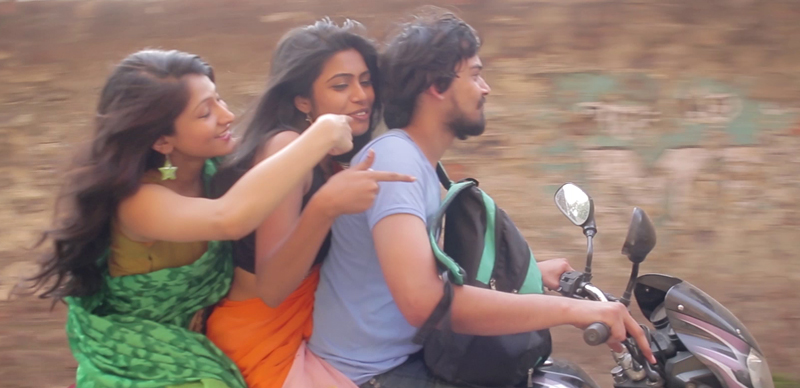Filmmaker Q began his career directing award winning ad films and then founded Oddjoint, a progressive art house in Kolkata – the city where he was born and raised. His films have shown at festivals across the world and Gandu, his cult classic, remains among the most downloaded films in the country.
Over the last decade, Q has been working on a personal documentation of the sari that remains unfinished, some of which he will be using to create a short independent film for The Sari: A How-To Drape Film Series, alongside filmmakers Bon Duke and Pooja Kaul.
Your work has been described as ‘revolutionary’, ‘controversial’ and ‘anti-Bollywood’. What kind of cultural perceptions about India are you hoping to change?
The idea of individual choices. We have an overwhelmingly majoritarian tendency as a nation state. This is very far from the pluralist diversity that we experience in our lives in the heart of the country. There is a strong pressure to homogenize, and my work is to challenge or question that.
Above: image | film still from Ludo (2015)
How did you come to be deeply invested in exploring the sari through film?
The sari has always fascinated me. I grew up surrounded by the flowing six yards, Kolkata being one of the prime spots of the sari world. Later, as I became drawn to the sensuality of the garment, I realized that I had to look closely at the sari, especially because it seemed to effortlessly and gracefully encapsulate the idea of femininity, from one extreme to the other.
Unlike any other garment, it kept flowing through the cracks of time and all social paradoxes. I have used the sari in almost all my films.
In some cases, it’s utterly realistic, like Gandu or Ludo, and in others, dramatized or heightened, like Tasher Desh. It was inevitable that I would try to make a film about the garment itself, given my obsession for it.
Above: image | film still from Brahman Naman (2016)
How does our Sari Project equate with the story you’re looking to tell?
I was immediately taken by the similarity of the intent that Border&Fall’s sari project had with what I was doing. I had been thinking a lot about why there’s no proper documentation of the different ways of wearing the sari. When I met Malika, we spoke pretty much the same language and of the same vision.
My association with this project will be through the short film ‘Sari Men’. I think this would makes an interesting addition to the video series being produced.
The image of the man playing a vital role in the sari world is something that has always amazed me. I think this lateral image making will provide a sense of diversity to the project, which will largely be about women.
Do you have reservations about working with a subject that comes with such socio-cultural weight?
It’s quite the opposite. I am always more enthused by subjects that challenge the stereotype, and the sari has done that for countless centuries. The weight that it bears is the weight of information and wisdom, as far as I concerned. My idea of immersing myself, losing myself in its world was to consciously search for textures and contexts and enrich myself. The theories of organic and pagan design, and the art of symbols: these are the foundations of the art of the sari. I wanted to learn about these ideas, experience them first hand, and build myself a pool of references that one can’t otherwise learn from institutional training. To elaborate further, let me draw a simple example.
Above: image | film still from Tasher Desh (2012)
The sari is woven on a handloom. The design of the sari is dependent on the loom as well as the artisan who operates it. Like the sari, the design of the handloom itself is complex but entirely organic. The details of this design vary greatly with the details of industrial design. The fact that the loom has existed over time, and has become an astonishing reservoir of cultural, mythical, spiritual and philosophical information, is an extremely exciting proposition for an artist.
How would you describe your personal aesthetic or style?
Subversion anarchist.
References
The works of Osamu Tezuka, and Amruta Patil – especially Adi Parva.
Filmography
Love In India (2009)
Gandu (2010)
Tasher Desh (2012)
Ludo (2015)
Brahman Naman (2016)








Q intrigues. His films and his interviews, intrigue. Though the films and the interviews hold their own independently, they also inform and interpenetrate each other, and in the process become increasingly enriched. However, does q identifies himself with a certain thought-current and then make movies that explore that thought-current (because that’s the impression that i get when he responds to questions like ‘what were you thinking when you made the film’)? Or, is the thought-process a retroactive construction, which is to say that he just makes his movies and then when asked, produces the thought-current? I would like to know Q’s views on this. Thank you!